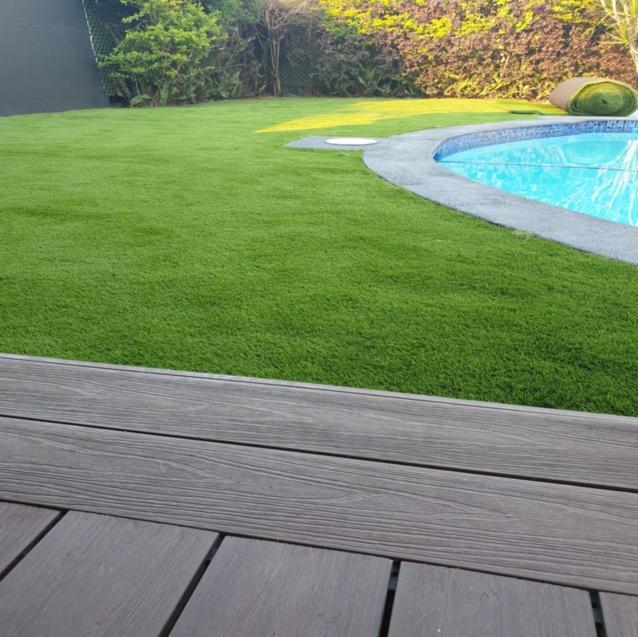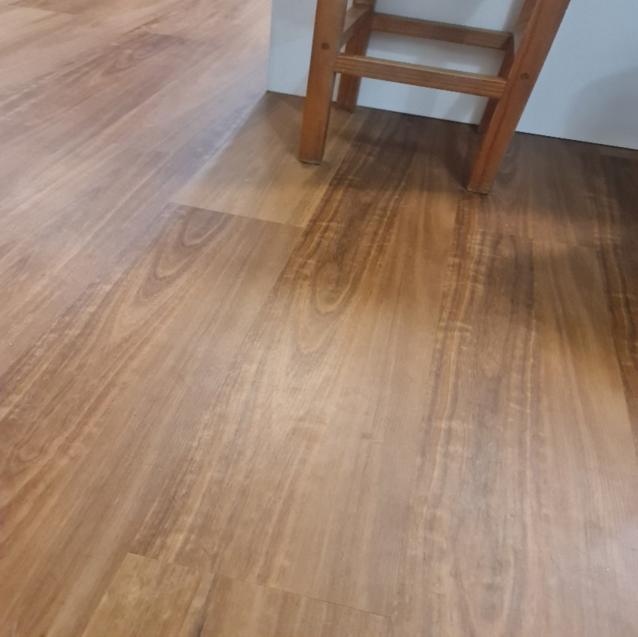
Timber Cladding vs Composite Cladding
By Ezy Decking|November 25, 2024
As a team of Sydney wall cladding specialists, we highly recommend composite timber cladding for clients looking to elevate the exterior of their living spaces. Also referred to as composite wood cladding, this innovative material blends recycled plastic fibres with timber shavings, offering enhanced strength and an extended lifespan for facades.
Opting for composite timber cladding in Australia allows both residential and commercial property owners to achieve the timeless appearance of traditional wood while benefiting from superior durability. In this blog, we’ll delve into the features of composite timber wall cladding and highlight its advantages over traditional timber, equipping clients with valuable insights for making informed, long-term investment decisions.
Composite Cladding Explained
Composite cladding is an exterior facade material made from reclaimed wood fibres and recycled plastic. These panels provide robust protection for your property’s exterior walls against harsh weather conditions while promoting natural ventilation.
During production, manufacturers minimize the use of volatile organic compounds (VOCs) and apply a protective layer to enhance resistance to moisture, debris, and extreme weather. Due to their exceptional durability, industry experts often recommend composite cladding for both new residential or commercial constructions and renovation projects.
Benefits of Composite Cladding
Easier and Cheaper to Maintain
While traditional timber cladding offers a timeless aesthetic, it demands significantly more effort to install and maintain compared to composite options. Unless pressure-treated, timber cladding requires meticulous painting and staining to enhance moisture resistance and achieve the desired colour scheme.
Even after applying the initial coat and varnish, these protective layers must be reapplied regularly as they degrade over time. Without adequate treatment, timber cladding is prone to rapid bleaching under direct sunlight or moisture absorption during wet seasons. This can lead to warping, splintering, and rotting, necessitating ongoing preventive care.
In contrast, composite cladding offers a superior, weatherproof alternative. Say goodbye to labour-intensive painting and staining. At Ezy Decking, our premium composite cladding range features an added protective layer that resists moisture and shields against damage and deterioration. Maintenance is effortless. Stains can be easily cleaned with a sponge and a bucket of warm, soapy water, providing a hassle-free experience.
Additionally, our composite sidings are equipped with ultraviolet (UV) inhibitors to preserve their vibrant colours and prevent fading over time. This ensures your cladding maintains its fresh, unblemished appearance for years to come.
Multiple Texture Choices
Today, manufacturers and suppliers provide composite cladding in a range of textures, including:
Australian home improvement stores and specialty building material suppliers provide a wide selection of composite cladding colour schemes, offering customers an array of exciting design possibilities.
Many retailers stock composite cladding in four or five tones. Popular choices include natural hues like teak and chocolate, contemporary shades like grey and charcoal, and neutral tones such as antique. One distinct advantage of composite cladding over traditional timber is that the colour is infused directly into the boards during manufacturing. This eliminates the need for frequent repainting, saving you time, money, and effort.
As experienced Gold Coast wall cladding specialists, we recommend keeping the following factors in mind when selecting your colour schemes:
Composite cladding offers several advantages over traditional timber. Its exceptional durability makes it a smart investment for homeowners seeking long-term reliability and value. Many composite options include protective layers that guard against moisture, further enhancing their structural integrity.
Another key benefit is its low maintenance requirements. Since the colour is infused directly into the boards during manufacturing, there’s no need for frequent repainting. Stains can be easily removed with a sponge and warm water, making upkeep simple and hassle-free. Choosing composite cladding for your residential or commercial property saves time, money, and effort in the long run.
Feel free to contact us with any questions about composite cladding. Our team is ready to assist you promptly!
Opting for composite timber cladding in Australia allows both residential and commercial property owners to achieve the timeless appearance of traditional wood while benefiting from superior durability. In this blog, we’ll delve into the features of composite timber wall cladding and highlight its advantages over traditional timber, equipping clients with valuable insights for making informed, long-term investment decisions.
Composite Cladding Explained
Composite cladding is an exterior facade material made from reclaimed wood fibres and recycled plastic. These panels provide robust protection for your property’s exterior walls against harsh weather conditions while promoting natural ventilation.
During production, manufacturers minimize the use of volatile organic compounds (VOCs) and apply a protective layer to enhance resistance to moisture, debris, and extreme weather. Due to their exceptional durability, industry experts often recommend composite cladding for both new residential or commercial constructions and renovation projects.
Benefits of Composite Cladding
Easier and Cheaper to Maintain
While traditional timber cladding offers a timeless aesthetic, it demands significantly more effort to install and maintain compared to composite options. Unless pressure-treated, timber cladding requires meticulous painting and staining to enhance moisture resistance and achieve the desired colour scheme.
Even after applying the initial coat and varnish, these protective layers must be reapplied regularly as they degrade over time. Without adequate treatment, timber cladding is prone to rapid bleaching under direct sunlight or moisture absorption during wet seasons. This can lead to warping, splintering, and rotting, necessitating ongoing preventive care.
In contrast, composite cladding offers a superior, weatherproof alternative. Say goodbye to labour-intensive painting and staining. At Ezy Decking, our premium composite cladding range features an added protective layer that resists moisture and shields against damage and deterioration. Maintenance is effortless. Stains can be easily cleaned with a sponge and a bucket of warm, soapy water, providing a hassle-free experience.
Additionally, our composite sidings are equipped with ultraviolet (UV) inhibitors to preserve their vibrant colours and prevent fading over time. This ensures your cladding maintains its fresh, unblemished appearance for years to come.
Multiple Texture Choices
Today, manufacturers and suppliers provide composite cladding in a range of textures, including:
- Traditional Composite Cladding: Featuring a sanded texture, this option enhances both functionality and aesthetics. It improves durability, minimizes glare, simplifies cleaning, and effectively conceals dirt and imperfections.
- Textured Composite Cladding: Designed to replicate the natural look of authentic woodgrain, this facade brings a timeless, elegant appeal to any property.
- Slatted Composite Cladding: Ideal for achieving uniform, linear designs, this style mimics the appearance of individual wooden battens. Both deluxe and slatted composite boards come with an additional protective layer to safeguard against moisture and extend the cladding's lifespan.
- Outdoor living spaces.
- Interior and exterior feature walls.
- Decorative facades for residential and commercial properties.
Australian home improvement stores and specialty building material suppliers provide a wide selection of composite cladding colour schemes, offering customers an array of exciting design possibilities.
Many retailers stock composite cladding in four or five tones. Popular choices include natural hues like teak and chocolate, contemporary shades like grey and charcoal, and neutral tones such as antique. One distinct advantage of composite cladding over traditional timber is that the colour is infused directly into the boards during manufacturing. This eliminates the need for frequent repainting, saving you time, money, and effort.
As experienced Gold Coast wall cladding specialists, we recommend keeping the following factors in mind when selecting your colour schemes:
- Location: For residents in warm climates, lighter colours like maple, teak, and cedar are ideal. These shades offer excellent thermal insulation, helping to reduce heat absorption and keep interiors cooler. In contrast, darker colours such as walnut and ebony are better suited for cooler regions, as they absorb and retain heat more effectively, enhancing indoor comfort and energy efficiency.
- Existing Colours: Consider blending new colours with your current palette. For example, lighter tones pair beautifully with contrasting shades like walnut. Industry professionals also recommend combining grey tones with red brick for a striking and dramatic aesthetic.
- Mood: Vibrant colours like red, pink, and green create an inviting and festive atmosphere, making them perfect for homeowners who frequently host gatherings or welcome guests. On the other hand, those seeking a more private and serene ambiance should opt for softer shades, such as grey, beige, warm brown, pale blue, or light stone.
Composite cladding offers several advantages over traditional timber. Its exceptional durability makes it a smart investment for homeowners seeking long-term reliability and value. Many composite options include protective layers that guard against moisture, further enhancing their structural integrity.
Another key benefit is its low maintenance requirements. Since the colour is infused directly into the boards during manufacturing, there’s no need for frequent repainting. Stains can be easily removed with a sponge and warm water, making upkeep simple and hassle-free. Choosing composite cladding for your residential or commercial property saves time, money, and effort in the long run.
Feel free to contact us with any questions about composite cladding. Our team is ready to assist you promptly!



